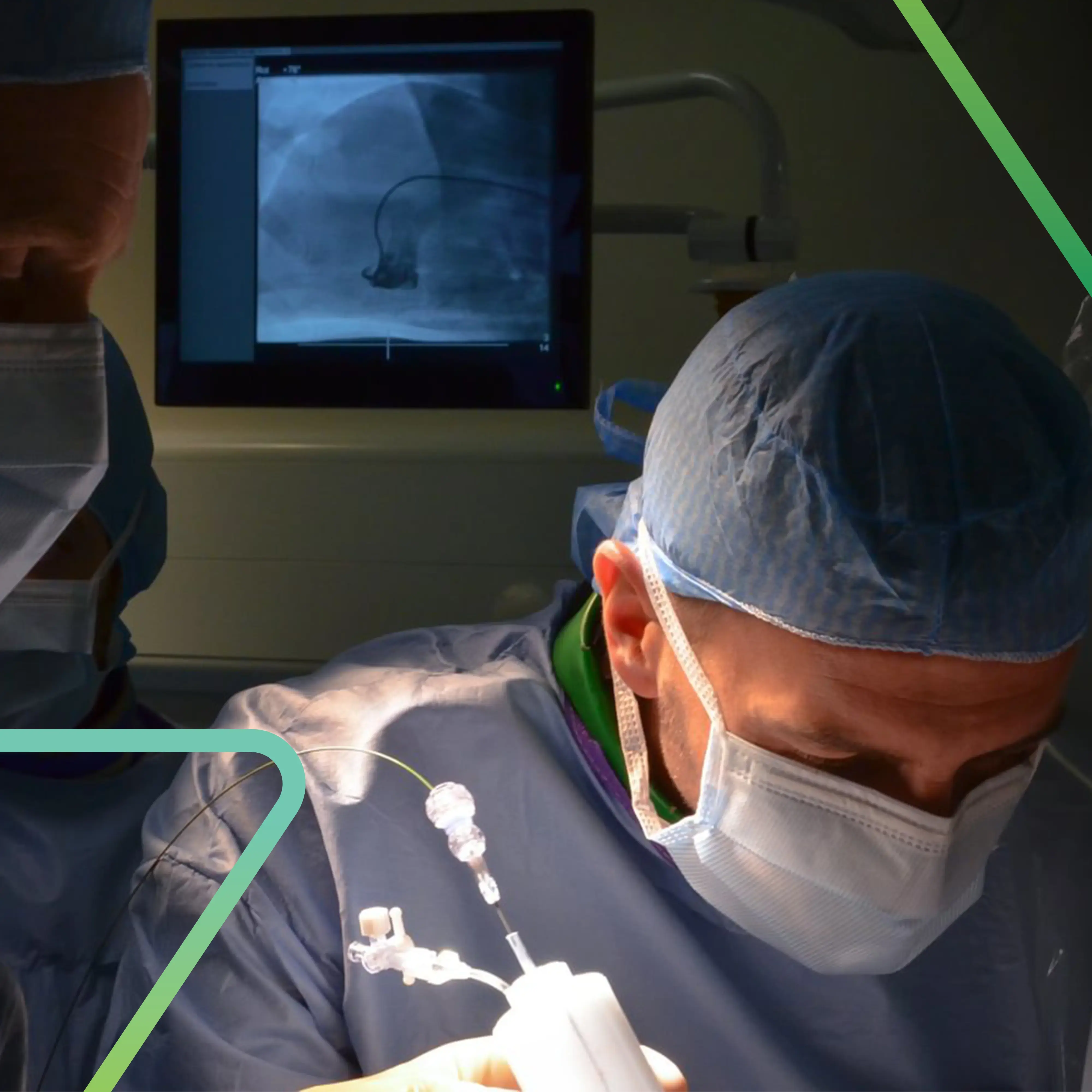5 min read
ISO 10993-1:2025 Publication Is Imminent: Implications for Med Device Innovators and Manufacturers Worldwide
 Lina Burman
:
Oct 22, 2025 8:23:33 AM
Lina Burman
:
Oct 22, 2025 8:23:33 AM

Authors: Lina Burman and Monica Grekula
The latest revision of ISO 10993-1 is nearly here, ostensibly a 2.0 for biological risk approaches to medical device regulatory requirements. It’s time to abandon “checkbox” thinking and create a robust, risk-based approach to medical device development, starting by asking the right questions.
Our medical device biocompability, toxicology and regulatory affairs experts Lina Berman and Monica Grekula offer their insights in the following breakdown.
At a Glance
The revision of ISO 10993-1 reached Final Draft International Standard (FDIS) status in July 2025 and is expected to be published within 2025, replacing the 2018 version. The update mandates a shift to risk-based biological evaluations for medical devices, now fully integrated with ISO 14971.
Editor's update: ISO 10993-1:2025 was published on 18 November 2025.
Who's affected: Global medical device manufacturers, especially those who only "ticked the boxes" in their biological evaluation.
Key differences: The risk management framework is now fully embedded in the standard, placing a clear focus on product specific risks, including even such as reasonably foreseeable misuse. Device categories shift from type of device (surface, implant device or “external communicating”) to only focus on type of contact (intact skin, mucosa, tissue, or blood), and a more conservative method for calculating contact duration is adopted.
Action needed: Build risk assessment expertise, document your thinking, integrate biocompatibility early in the product development process – it's a multidisciplinary task!
Timeline: Standard expected to be published during 2025. In the EU, no grace period is confirmed. You should discuss it with your Notified Body, as the latest edition is being considered state of the art according to the Medical Device Regulation (MDR). In the United States it is dependent on recognition by the US FDA.
As publication of ISO-10993-1:2025 nears, these are the top questions (and answers) our industry colleagues are asking.
Will ISO 10993-1:2025 require more testing? Not necessarily. If you truly understand your device's risks, testing requirements may remain similar or even decrease. Additional testing only becomes necessary when the risk-based approach reveals previously unconsidered biological hazards.
Do I need to completely redo my biological evaluation? Take a step back and evaluate whether you've been checking boxes or truly assessing risks. If you've been following a risk-based approach already, updates may be minimal. If there are no gaps in the identified relevant risks, then updates are only needed in case of changes to your device.
How is this different from FDA's current requirements? The US FDA has been moving toward risk-based thinking over the past decade. However, the extent of recognition by FDA is so far unknown. New Biocompatibility Guidance released from the FDA would not be a surprise.
The End of "Table A1" Mentality
For decades, many medical device companies have operated with what industry insiders call the "A1 mentality," a reference to the famous Table A1 in Annex A of ISO 10993-1:2018 that provided clear, prescriptive list of biological testing to be addressed, based on device category, contact type, and duration, interpreted as requirements despite clearly clarifying text. Device touches intact skin for less than 24 hours? Check these boxes. Implant for more than 30 days? Check those boxes. Simple. Predictable. Defensible. But this comfort came at a cost. Companies have sometimes conducted unnecessary tests simply because they appeared on the checklist. Worse, genuine risks that fell outside standard categories sometimes went unaddressed. The checkbox approach created an illusion of comprehensive biological safety evaluation while potentially missing device-specific hazards.
With the updated ISO 10993-1, the standardization committee wants to finally get rid of the check-box approach with Table A1 as a shopping list; fundamentally reshaping regulatory philosophy. Instead of asking "Which tests must we perform?" companies should ask "What biological safety risks does our device actually present?"

The Real Impact: The Core Biological Effects Remain, But Their Application Evolves
While the fundamental biocompatibility effects, addressed as endpoints in the 2018 version, remain consistent; their application becomes more nuanced. Physical and/or Chemical Characterization is still pivotal, but it has no longer a place in a table format as not being a biological effect. Cytotoxicity, sensitization, irritation, systemic toxicity, genotoxicity, local effects following tissue contact (clarified as not limited to implants), and hemocompatibility continue to serve as the backbone of biological effects that need to be addressed. The revised version emphasizes the need for understanding and justifications for when and why you don't perform, as well as do perform, tests of biological effects. It emphasizes avoiding testing involving animals when deemed not essential or when equivalent in vitro methods are available, in line with the 3R principle – Replace, Reduce and Refine. Acceptance criteria must also be documented in the biological evaluation plan, along with a clear rationale for them.
Device categories: A simplification has been made with reduction to four groups, focusing on what the patient contact is, rather than in what way: Devices in contact with 1) intact skin, 2) intact mucosal membranes,3) breached or compromised surfaces or internal tissues other than blood, and 4) circulating blood. The category “Externally Communicating” as it appeared in the Table A1 has been removed as this term was challenging for lot of users. A fifth category covers non-contacting devices, which obviously do not need a biological-effects guidance table in the standard.
How to calculate exposure duration: Each day of exposure is now to be considered and not the sum of minutes and hours. This is in line with toxicological risk assessment of systemic effects as it is not necessarily the time per exposure occasion that sets the quantity of substances reaching the patient per single day. For categorization, only the days with contact are considered. For example, for a device in contact 10 minutes twice a week for 6 weeks the number of contacting days is equal to 12, thus contact category is prolonged (<30 days). However, if the contact would be 10 minutes every day for 6 weeks, the contact category would be long-term (> 30 days). Note the following per the standard, "These time periods are for categorization only, and other durations can be justified for risk assessment (e.g. minutes or hours of use) or testing (e.g. hours of use) if applicable, as described in relevant standards, such as ISO 10993-5, ISO 10993-17 and ISO 10993-18." Also, where risk for bioaccumulation is identified, the contact duration of the medical device shall be long-term unless otherwise justified.
Considerations based on device categories: Recommendations for considerations are still available, now divided into four tables and with further guidance in footnotes to remind about product specific risks.
Material-mediated pyrogenicity: This effect has been removed from tables of effects to consider; being rare and shown to occur only in the case of a small number of constituents (if ever?). It may still need to be addressed but in most cases sufficient with a justification of insignificant risk instead of testing. Keep in mind: cross-contamination during manufacturing (biologics, pharma), may create a true risk.
Assessment of reasonably foreseeable misuse: These are risks identified in the overall risk management analysis and thus need to be addressed if not possible to avoid. The thought is not that the biological evaluator should come up with this on its own.
Equivalence: The revised version includes a description of the process to demonstrate biological equivalence. Above material equivalence, including chemical and physical equivalence that are addressed in ISO 10993-18 and IS/TS 10993-19, contact equivalence also needs to be considered to address biological equivalence.
In our upcoming articles, we'll explore how the MDR has prepared EU manufacturers for this transition, outline a practical path forward for implementation, and provide a framework of essential questions to guide your risk-based approach.
Future Implications of ISO 10993-1:2025: More is Around the Corner
The revised version of ISO 10993-1 lacks clarity in several areas. With more time, the writing group could have addressed these issues more thoroughly. However, there is some reassurance: due to these identified gaps, additional guidance is currently under development to support the following topics:
- Lifecycle assessment to include shelf-life considerations (and reprocessing)
- Bioaccumulation / Exposure duration
- Risk estimation
- Literature Review
- Biological equivalence
- Definitions and Acronyms – for whole ISO 10993 series
In need of assistance or training?
We are happy to assist you if you are in need of knowledgeable evaluators for fulfillment of competence requirement, training of your team, or just a second opinion in the transfer to working in accordance with the revised version. Contact us via https://veranex.com/contact/project-request, or send an email to biocompatibility@veranex.com.
About the authors:
Lina Burman, PhD, is Senior Manager, Biocompatibility and Toxicology at Veranex. She holds a PhD in polymer chemistry with focus on chemical analyses and degradation behavior. She possesses 15+ years working with biological evaluations and toxicological risk assessments of medical devices along with deep expertise in the evaluation of breathing gas pathway devices.
Monica Grekula is Senior Director, Biocompatibility and Toxicology. With 25+ years of experience in the medical device industry, she holds an MSc in Pharmacy and MSc in Applied Toxicology. She is a European-registered Toxicologist and Member of ISO/TC194 since 2006.



